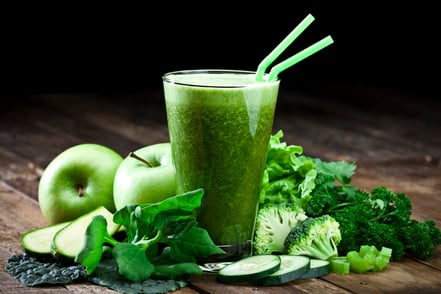 Colder, drier air, less sunlight, more time spent indoors, increased holiday travel, and more mixing and mingling all contribute to rising rates of illness in the winter months. While no single food or supplement can prevent or treat illness, a balanced diet with the right combination of key nutrients can support a healthy immune system—making it easier for your body to fight off illness and infection.
Colder, drier air, less sunlight, more time spent indoors, increased holiday travel, and more mixing and mingling all contribute to rising rates of illness in the winter months. While no single food or supplement can prevent or treat illness, a balanced diet with the right combination of key nutrients can support a healthy immune system—making it easier for your body to fight off illness and infection.
A food-first approach is recommended when it comes to obtaining these nutrients. This means focusing on whole foods as your primary source rather than relying heavily on supplements. Below are several key nutrients for maintaining a healthy immune system this winter and the foods in which they can be found.
Vitamin C
Vitamin C is a well-established immune-supporting nutrient. It serves as an antioxidant, helping fight off cellular damage that can make cells more susceptible to illness and infection. It also supports the function of phagocytes, the cells that “eat” pathogens.
Most fruits and vegetables contain vitamin C, but seasonal quality can vary this time of year. It can be helpful to choose those that are in season, such as citrus fruits (oranges, clementines, grapefruits) and their juices, pomegranates, kiwis, bell peppers, and leafy greens like kale, Brussels sprouts, broccoli, and cabbage. Frozen fruits are also a great option, as they are typically picked at peak ripeness and remain just as nutritious as fresh varieties.
Vitamin D
Vitamin D helps activate white blood cells that detect and destroy pathogens. Without adequate vitamin D, these cells are not as effective. Sunlight exposure contributes significantly to vitamin D production, but during the winter months, sunlight and time spent outdoors decrease—leading to lower natural production. Vitamin D is also found naturally in very few foods, so unless you’re intentional about including these foods regularly, you may fall short.
Vitamin D is primarily found in fortified dairy products and dairy alternatives (almond, soy, coconut), fatty fish (salmon, mackerel, sardines, anchovies), egg yolks, and mushrooms exposed to sunlight. If you don’t consume several servings of these foods on a regular basis, your physician can order a blood test to determine whether your levels are adequate and if a supplement is indicated.
Zinc
Zinc plays an important role in the normal development and function of immune cells. It may also help inhibit the replication of certain viruses and bacteria, potentially shortening the length of infection. Zinc is best absorbed through animal sources such as beef, pork, turkey, seafood (oysters, crab, shrimp, sardines), eggs, and dairy products. It can also be found in plant sources, including seeds (pumpkin, hemp, chia), nuts (cashews, almonds, peanuts), beans, lentils, and whole grains.
No one supplement or food can prevent or treat illness, and diet is only one part of the equation. To further reduce your chances of getting sick this winter, remember to wash your hands regularly, sanitize frequently touched surfaces, cover your coughs, and stay well hydrated and well rested.
By focusing on nutrient-dense foods and simple daily habits, you’ll give your immune system the support it needs all season long.


 You can also obtain creatine through supplements.
You can also obtain creatine through supplements.  In small amounts, free radicals are part of your body’s defense system. But in excess, they can damage cells and may play a role in cancer, heart disease, stroke, arthritis, vision loss, and even brain conditions like Parkinson’s or Alzheimer’s disease.
In small amounts, free radicals are part of your body’s defense system. But in excess, they can damage cells and may play a role in cancer, heart disease, stroke, arthritis, vision loss, and even brain conditions like Parkinson’s or Alzheimer’s disease. Adequate energy is needed for all bodily processes, including essential functions like keeping your heart beating, your lungs breathing, and maintaining your body temperature within range, as well as other activities like day-to-day movement and structured exercise.
Adequate energy is needed for all bodily processes, including essential functions like keeping your heart beating, your lungs breathing, and maintaining your body temperature within range, as well as other activities like day-to-day movement and structured exercise.
 We’ve all been here before: When it seems the long, gray winter will never end and you make one more pot of hearty vegetable soup or another casserole; or when the lackluster tomatoes and almost pinkish-white strawberries just aren’t cutting it. It’s time to get creative!
We’ve all been here before: When it seems the long, gray winter will never end and you make one more pot of hearty vegetable soup or another casserole; or when the lackluster tomatoes and almost pinkish-white strawberries just aren’t cutting it. It’s time to get creative!